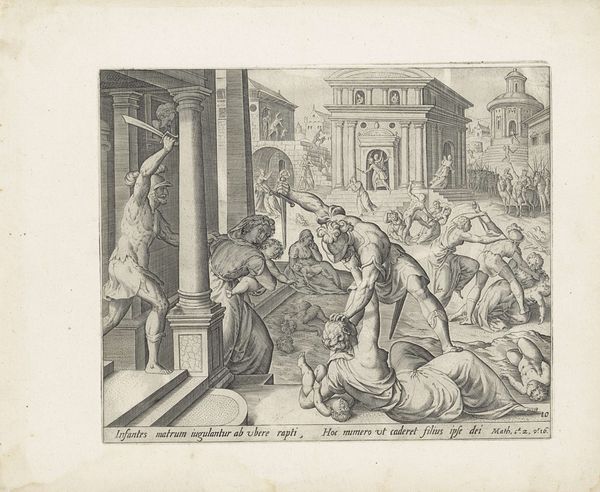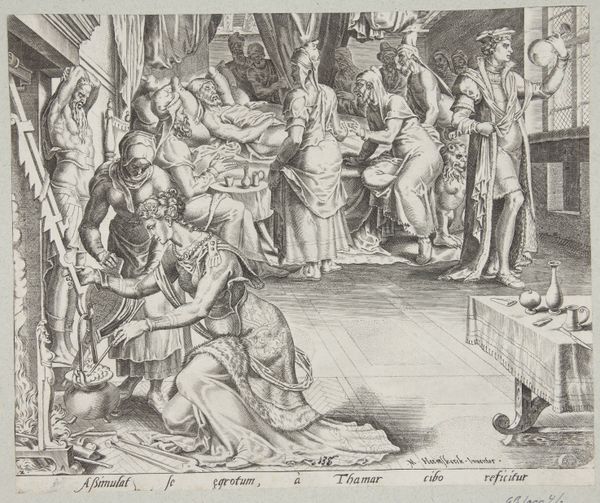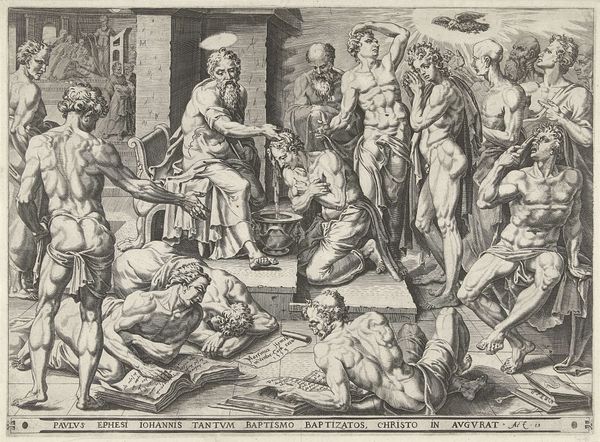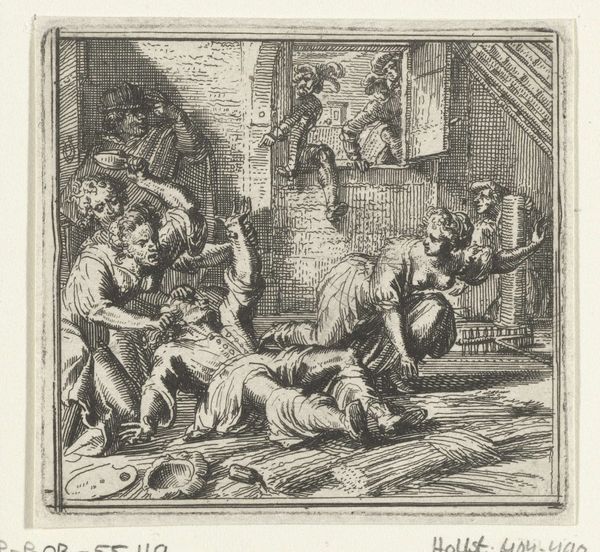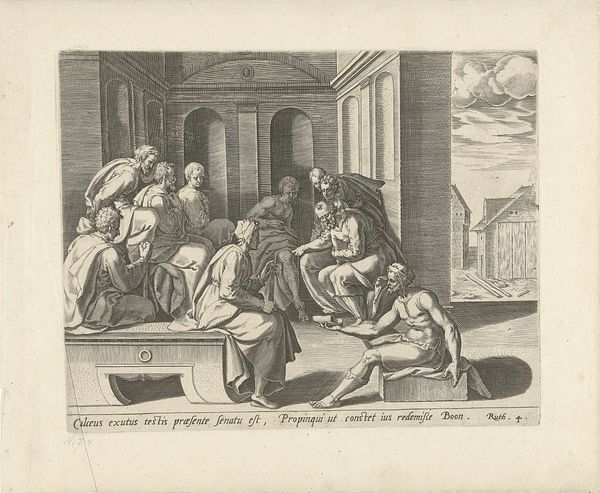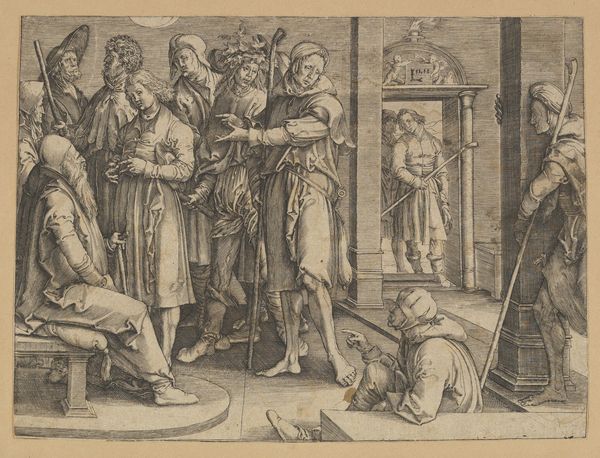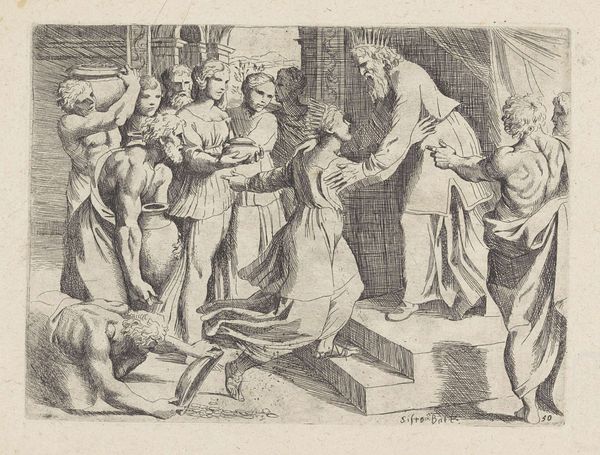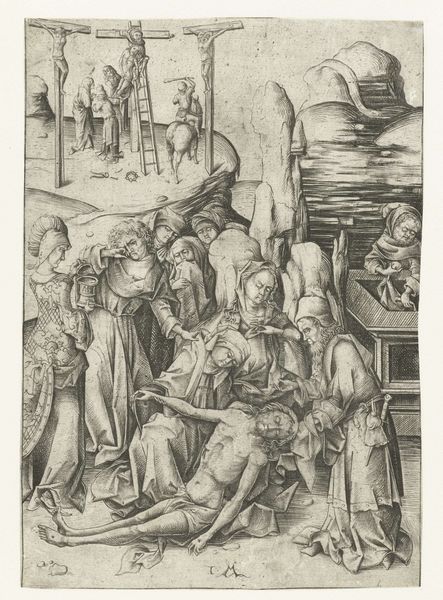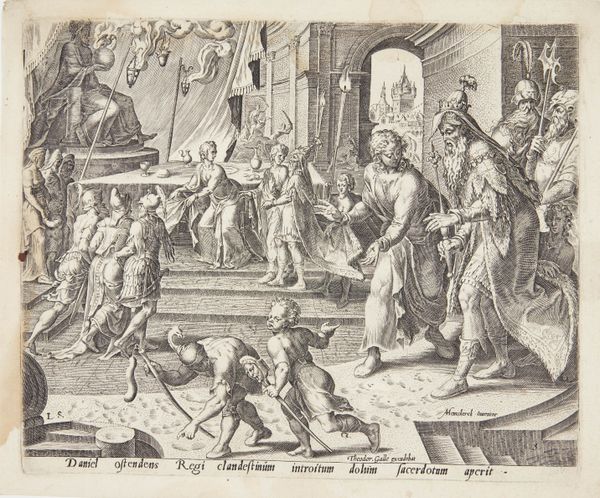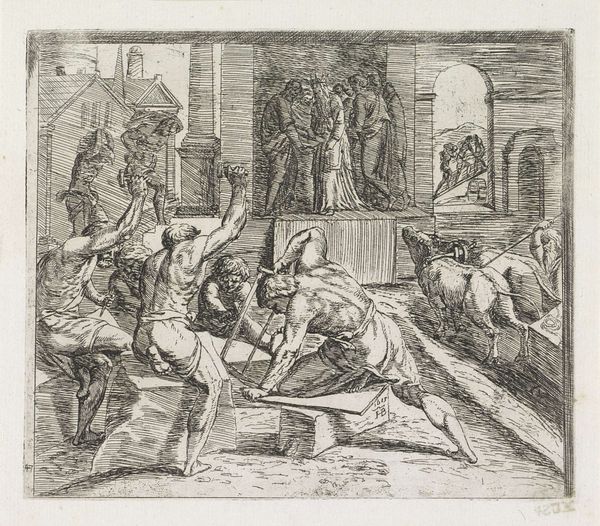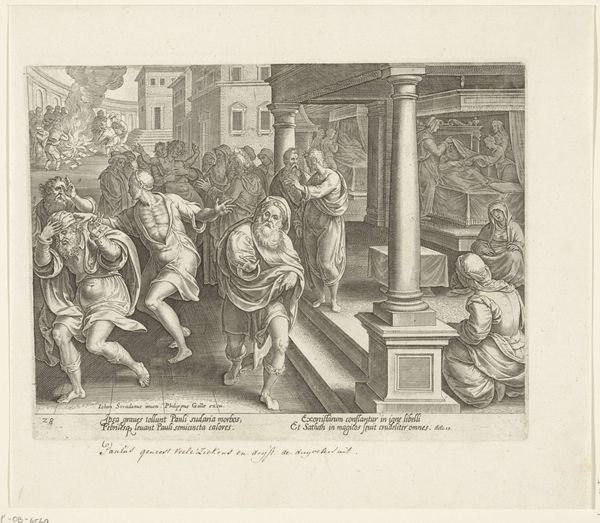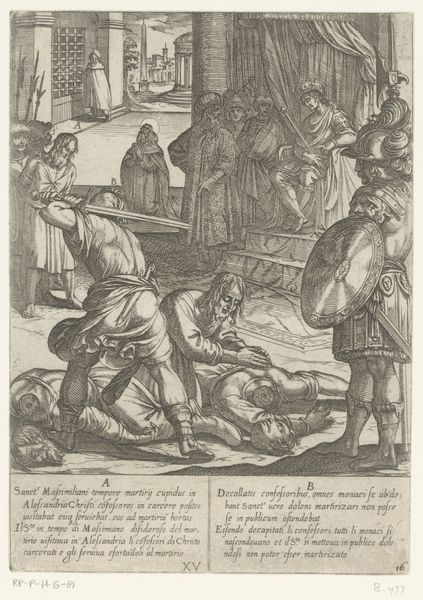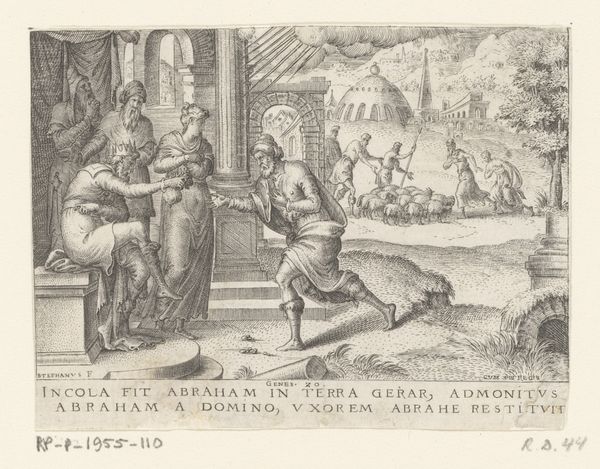
print, engraving
#
narrative-art
# print
#
pen illustration
#
pen sketch
#
figuration
#
11_renaissance
#
history-painting
#
engraving
Dimensions: height 83 mm, width 115 mm
Copyright: Rijks Museum: Open Domain
Editor: This is "Paulus geneest de man die niet kon lopen" (Paul Healing the Man Who Could Not Walk) made in 1547 by Cornelis Bos. It’s an engraving currently held in the Rijksmuseum. I’m immediately struck by the division of space in the image, with this clear foreground and background. What do you see in this piece? Curator: The organization of space certainly presents an interesting dynamic. Notice how the architectural framing devices—the doorway and implied lines—structure the viewer's gaze, directing it from the intimate healing scene to the bustling background. It begs the question: how do these carefully constructed planes interact? Is it creating order from the chaos? Editor: That's interesting! I was so focused on the narrative; I hadn’t considered the visual relationship in that way. The background figures almost seem to mimic the seated man's pose, though in a frenzied, celebratory manner. Is that mirroring intentional, do you think? Curator: Precisely. This juxtaposition establishes a clear dichotomy: stillness and motion, faith and spectacle. We can read the engraving's formal qualities – the play of light and shadow, the crispness of line – as contributing to a dialectical argument about the nature of belief. Where does true faith reside, according to Bos' compositional choices? Editor: I see what you mean. By directing our gaze and dividing the scene, he’s implying meaning with these elements. I originally thought that the foreground-background was simply a matter of perspective, but I missed how the shapes created this subtle tension! Curator: Exactly. Reflect on how the materiality of the engraving itself contributes. The crisp lines and defined space speak to precision and considered structure. That contributes meaning just as much as any contextual or iconographical element. Editor: So, paying attention to form, light, and the relationship of shapes within the work allows us to "read" it for meaning and the potential intent, even without contextual clues. Thanks for your thoughts. Curator: A valuable point to keep in mind going forward. Focusing on what is inherently visible is a sound practice in assessing artworks.
Comments
No comments
Be the first to comment and join the conversation on the ultimate creative platform.
